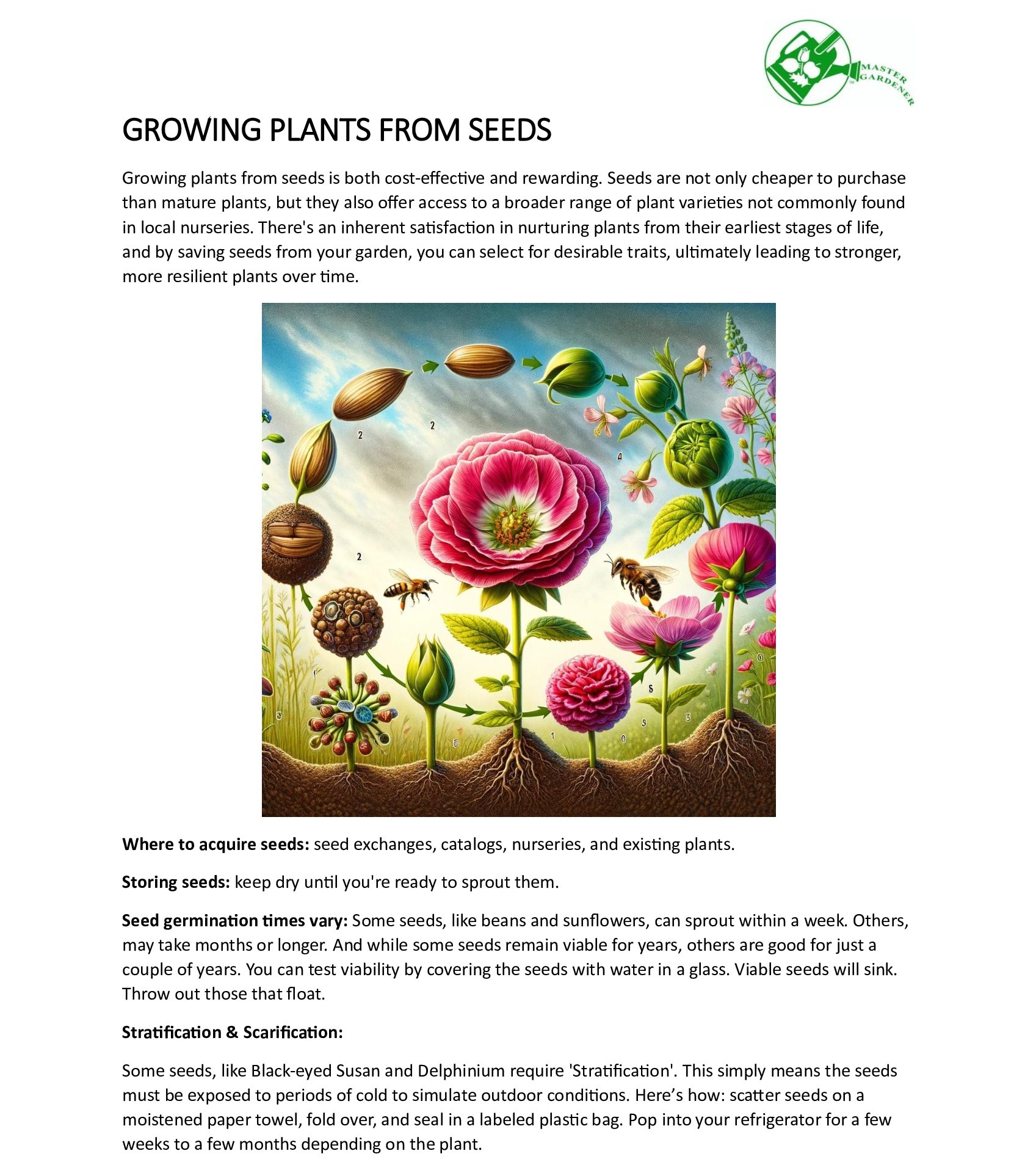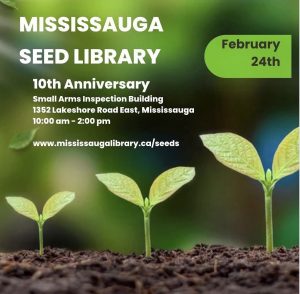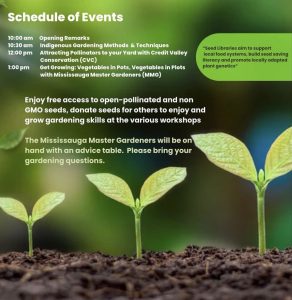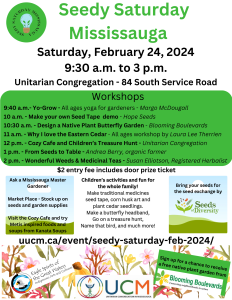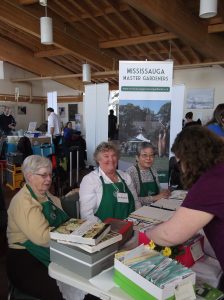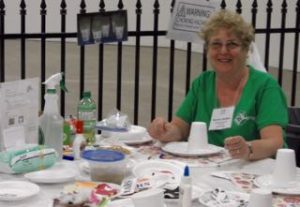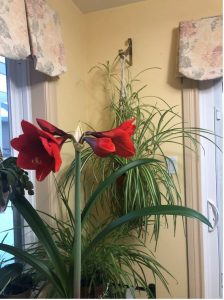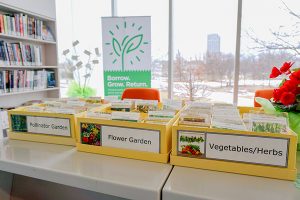MMG
Tips & Techniques for the Home Gardener on Growing Plants from Seeds
Brampton Seedy Saturday, March 9th, See you there!
Mississauga MGs will have a gardening advice clinic at Brampton’s
Seedy Saturday March 9th. Bring your garden questions!
The event also offers a great deal more to interest garden aficionados:
- Hear from environmental experts
- Access gardening resources
- Connect with vendors
- Share, swap and buy seeds
- Enjoy the Seedy Café
- Explore the Kids’ Zone
- For more info: //www1.brampton.ca/EN/residents/parks/pages/seedy-saturday.aspx
Mississauga Seed Library 10th Anniversary Celebration, Saturday Feb 24th: 10 am to 2 pm. Join Mississauga MGs there!
Mississauga Seed Library 10th Anniversary & Launch
Join us as we celebrate the 10th year of the Mississauga Seed Library with workshops, gardening experts and family friendly activities.
Saturday, February 24 | 10:00 am – 2:00 pm
Small Arms Inspection Building
Visit Mississauga MGs advice table and bring your garden questions!
Seed Library Launch Drop-in Schedule
10 am – 2 pm | Exhibitors
10 am | Opening Remarks
10:30 am | Indigenous Gardening Methods and Techniques
12 pm | Attracting Pollinators to Your Yard with Credit Valley Conservation
1 pm | Get Growing: Vegetables in Pots, Vegetables in Plots with Master Gardeners
Attracting Pollinators to Your Yard
12 pm – 1 pm | Drop-in
Pollinators help plants to bloom and thrive. Want to support butterflies, bees and other pollinators in their natural roles? Discover the top native flowers, shrubs and trees you may plant to help them along. Learn how to create beautiful, healthy habitat even in the smallest spaces. Presented by Credit Valley Conservation.
Get Growing: Vegetables in Pots, Vegetables in Plots
1 pm – 2 pm | Drop-in
Learn about growing edibles and planning your vegetable garden in pots or plots this growing season. Presented by Master Gardeners.
|
Seedy Saturday @ The Unitarian Congregation Feb 24th
Visit the Master Gardeners’ Kid’s Garden & Advice Clinic @ the Home & Backyard Show Feb 2-4, 2024
Mississauga Master Gardeners (MMG) & Etobicoke Master Gardeners (EMG) invite you to visit us at the Home and Backyard Show February 2-4, 2024, Mississauga International Center. Explore the Children’s Garden and get your hands dirty while enjoying a hands-on gardening experience, including learning how to care for different plants. Learn about Good Bugs & Bad Bugs, find out who are the Pollinators in the garden, and how to attract them. Make a pine-cone bird feeder, create your own grass head, and participate in other fun and creative activities. Children will have a great time discovering the joys of gardening in this enjoyable and educational gardening experience.
Have a gardening or horticultural question? Ask an Expert. Drop by the Master Gardener Advice Clinic and visit our experts bringing your questions, pictures, and challenges, and they will have you walking away with a number of solutions and ideas.
Hurray for the Amaryllis! Queen of the Christmas Flowers
By Diana Westland, Mississauga Master Gardeners
At this time of year, it is common for us to celebrate the holiday season by filling our homes with evergreens and flowers. The showiest among the flowering plants is the mighty Amaryllis. Many people are intimidated by these bulbs, and once the blooms are over, they discard them. However, for those who can take the time, aftercare for these exotic bulbs is simpler than you think. These bulbs can continue to bloom for you every year.
First, a little background on the Amaryllis plant. The bulbs sold during Christmas originate in South America and are Hippeastrum spp. rather than the original Amaryllis belladonna native to South Africa. These Hippeastrum bulbs have been heavily hybridized over the years. The natural cycle of dormancy, blooming and leaf growth must be emulated for them to bloom for us in December.
The larger the bulb, the larger and the more numerous the flowers. The energy for producing the flowers is stored in the bulb. Therefore, there must be a period where leaves are permitted to develop exposed to full bright but indirect sunlight for a period of several weeks. During this growth period these plants can be treated as houseplants and placed in a sunny window, or placed in the ground or on a sunny balcony in late spring and summer once danger of frost has passed. The more sunlight the leaves receive, the more energy the bulb can store to produce the flowers.
However, as the plants are tropical, grown in USDA Hardiness zone 9-11, the bulbs cannot stay outside in Mississauga in late fall/winter. They must be brought inside. Repotting with sterile soil is recommended if they have been exposed outside to ensure no insect eggs or fungal spores are carried inside to breed during the dormancy period.
My first Amaryllis was a gift. When the blooms ended, I decided I would care for it and hope to get blooms the following year. I moved the plant to a window exposed to morning light. Lily-like leaves emerged and continue to thrive from that Christmas to the following September.
In September I moved the bulb to my cold cellar where there is no light, and temperatures are slightly cooler. The bulb received no water or nutrients during this dormancy period, roughly 8 weeks.
As the leaves faded, I removed them. I restored the bulb to a sunny window in Mid-November and sparingly watered and fertilized it: the soil was allowed to dry between waterings. The flower stalk emerged and produced the flowers in time for Christmas once again. Success!
References:
//plants.ces.ncsu.edu/plants/amaryllis/
Amaryllis, Hippeastrum – Wisconsin Horticulture
Mississauga Seed Library Launch
Welcome spring with the re-opening of the Mississauga Seed Library for 2023.
Now in a new location (while the Port Credit library is under renovation.)
Celebrating the 9th year of the Mississauga Seed Library with workshops, gardening experts and family-friendly activities.
When: SATURDAY MARCH 11th. 10:30 am to 1:30 pm
Location: Small Arms Inspection Building (SAIB)
1352 Lakeshore Road East Mississauga, ON L5E 1E9
Mississauga Master Gardener Nominated for Community Award

MMG Jeanne McRight, shown above with Ward One Councillor Stephen Dasko, as she receives her certificate.
“It’s such an honor to be nominated for Mississauga’s Ward One Award of Excellence for Environmental Stewardship,” says Blooming Boulevards founder Jeanne McRight.
Jeanne’s non-profit organization Blooming Boulevards has as its focus pollinator support and community education. “By growing locally indigenous wildflowers on our urban boulevards – normally planted with high-maintenance grass – we are providing food and nesting spaces for our 400 species of native bees. These bee species are declining at precipitous rates, with one species common just a decade ago now the on the endangered list. Loss of habitat is a major reason. It makes sense to replace grass with pollen-laden and nectar-rich flowers that feed butterflies and bees. And along the boulevards, up close and personal, the beautiful streetscapes feed our souls.” Blooming Boulevards got its start in early 2019, but its outreach program has already made its mark with several residential pollinator gardens already planted, as well as community pollinator gardens underway in the Small Arms Society lands and, most recently, Spruce Park. Projects well worthy of Environmental Stewardship commendation!
Learn more about Jeanne’s important work here: BloomingBoulevards.org
Volunteers always welcome! Several other Mississauga MGs are lending their support to this great organization.
Come on Down to CNE 2019, Master Gardeners Advice Clinic

The Canadian National Exhibition 2019 runs from August 16 to Sept 2, including Labour Day Monday.
Master Gardeners from all over the GTA will be on hand at Heritage Court at the Master Gardener’s booth throughout the event. Find us near the flower show.
Bring your gardening questions along; our MG volunteers are ready and willing to offer our expert advice.
See you there!
Master Gardeners are in a class of their own: Mark Cullen | Toronto Star column
When it comes to cultivating passion, energy and talent, Canada’s Master Gardeners are standouts.
Master Gardeners are dedicated to the art and science of gardening. And, with their generosity of knowledge and time — on public garden tours, at local horticulture societies, at small shows and big ones such as Canada Blooms and in various online forums — they help sustain a broader community of Canadian gardeners.
The term, or title, Master Gardener is not one that is simply pulled out of the air — or the soil. The real dirt:
In the early 1970s, Washington State University developed the concept that volunteers could get horticulture training they would then share with their communities. The title Master Gardener was borrowed from Germany, where the highest title for horticulture was “Gartenmeister,” which translated to Master Gardener.
Journey North: As the Master Gardener program began to sweep across the U.S. in the early 1970s, Dave Omrod, a plant pathologist in British Columbia was taking note of a problem north of the border: garden centre staff were often ill-equipped with the necessary knowledge to advise backyard gardeners. Omrod joined Bill Peters, a B.C. horticulture specialist, to adapt the Washington State U. curriculum to their west-coast province. They started with a six-week course for willing volunteers. It was an instant success.
With help from a handful of universities and provincial agriculture ministries, the program moved its way across Canada throughout the 1980s.
During the 1990s, provincial governments gradually withdrew financial support, which led to the Master Gardener programs becoming established through independent not-for-profits.
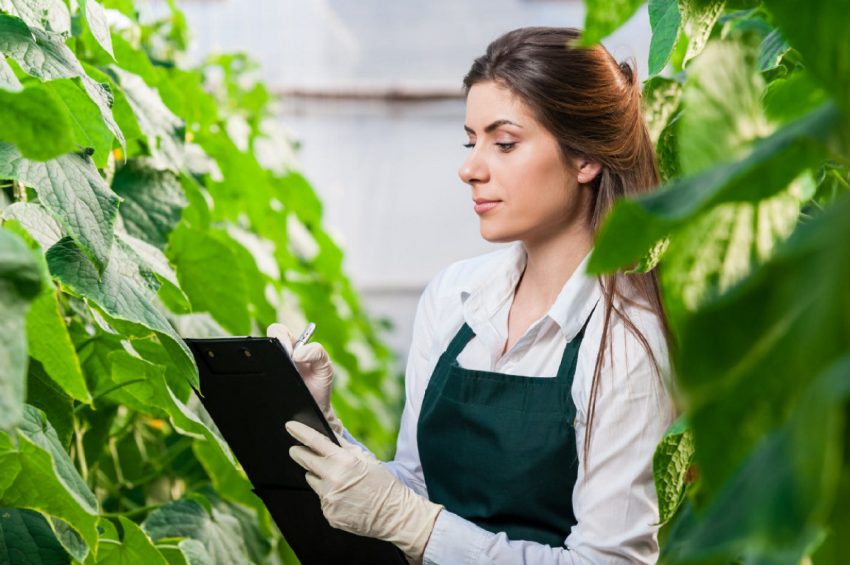
Becoming a Master Gardener: There is no shortcut. Achieved through the Master Gardeners of Ontario Inc., the title’s authority is well-earned.
- Future Master Gardeners start with an entry exam and then are interviewed to assess their potential for “public service and volunteerism.” If they pass, they become “Master Gardeners in Training” (MGiT).
- Once a MGiT, they must do 30 hours of annual public service and attend a minimum number of monthly meetings. Plus, there’s an educational component that can take up to three years and ends with a comprehensive exam for certification.
- While a handful of universities offer Master Gardener Certificate programs, regional chapters often have more-affordable self-study options.
- All Master Gardeners pay a small annual fee to support the ongoing activities of the organization.
Why become a Master Gardener? To borrow an old advertising slogan from American Express: It has its privileges. Those include access to technical updates with industry experts. As well, the designation provides access to a group of passionate, community-minded people with a common interest.

Where to find them: Master Gardeners are often present wherever gardening touches our lives:
- Doing speaking engagements at local horticulture or service clubs.
- At botanical and display gardens across Canada, where they share both their expertise and physical labour skills.
- Online, where they offer rich resources and answer your questions. Or over the phone, if you prefer the analog approach.
- Look up a seed exchange or a plant sale, where Master Gardeners are often the driving force.
- Schools invite Master Gardeners to take part in the teaching curriculum.
- Townships often call upon Master Gardeners when looking for advice about green initiatives in their communities.
In countless and often invisible ways, Master Gardeners contribute much to the gardening community at large, elevating both our appreciation and knowledge of horticulture over the years. You could call them the superheroes in our midst
Source: Master Gardeners are in a class of their own: Mark and Ben Cullen | Toronto Star



